Research
Rehman Medical Institute (RMI) and Rehman Medical College (RMC) have maintained a pioneering role in health care and medical education since their inception. The aim is to produce the doctor with a difference through research guided medical education and evidence based practice in the workplace.
To realize this aim, the Department of Medical Research (DMR) was established in RMC in March 2010 with the mission to develop a medical research culture at RMI/RMC. This was to be accomplished through a series of objectives:
1. To develop undergraduate (UG) research curriculum as an integral part of the modular integrated MBBS curriculum starting from first year MBBS.
2. To train medical students, from first year onwards, in concepts and practice of medical research through involvement in research projects.
3. To encourage and facilitate research activities in basic, preclinical and clinical departments of RMC and RMI, thereby creating further portals of teaching and training for medical students
4.To develop links for collaborative research at national and international levels with other institutions in areas of mutual interest and importance.
The Department of Medical Research is located on the 7th floor, where purpose-built suite of laboratory and office space is available. The Department has staff offices, a research laboratory, a workshop room and a research library, to start with. Ultimately, it is proposed that a state-of-the-art Medical Research Centre would be developed.
FACULTY
Current DMR faculty consists of a full time staff of Medical Research Director, Two Senior Research Officers and two Research Officers.
The faculty structure would be strengthened with the passage of time to include a Deputy Director, more Research Officers, and various cadres of Trainee Research Officers; induction of an Epidemiologist, a Statistician and Laboratory Technologists would be forthcoming in future years.
STRATEGY
The DMR developed a strategy and undertook a number of steps in keeping with the mission and vision imparted to it.
A tiered program of UG medical research teaching and training was developed and implemented
after formal approval of Principal RMC.
The tier allowed for carrying out teaching and training through all MBBS years enabling data collection in first year to carrying out independent projects in final year.
Student teams were made of 5-6 members each, making for a total of 18 teams of first year MBBS students.
Meetings were held with individual teams by DMR faculty to:
- Develop the team structure ; a team leader (by rotation) and members
- Provide instructions for research projects.
- Choose an appropriate research project.
- Assign tasks to individual members.
- Develop the project in planned phases
- Develop data collection tools.
- Provide guidance and facilitation in data collection and data analysis.
- Provide assistance in project write-up.
- Develop follow-up protocols for meetings and deadlines
A series of supportive sessions (LGF and SGF) conducted by DMR faculty were included in the curriculum to enable students to refine their research work and improve their standards of research Students were given instructions and trained in the use of computers for literature searches, medical writing and making presentations; they were also trained to use statistical programs such as Excel and SPSS for data entry and analysis.
CURRENT STATUS OF UNDERGRADUATE RESEARCH PROJECTS
A total of 130 research projects by student teams or individual students are underway in various stages of development, out of which 55 projects have been completed.
CAPACITY BUILDING
The DMR embarked on a capacity building program to enable the provision of trained Research Supervisors from among the RMC/RMI faculty. To this end, series of training sessions were held where faculty members got trained through hands-on workshops in various aspects of Research Methodology, Biostatistics and Medical Writing. Currently, the faculty capacity enables the provision of one Research Supervisor for two student research teams.
The program also enabled many faculty members to develop their own research projects and publications, in addition to enrolment in Postgraduate courses where research is an integral part of course completion.





